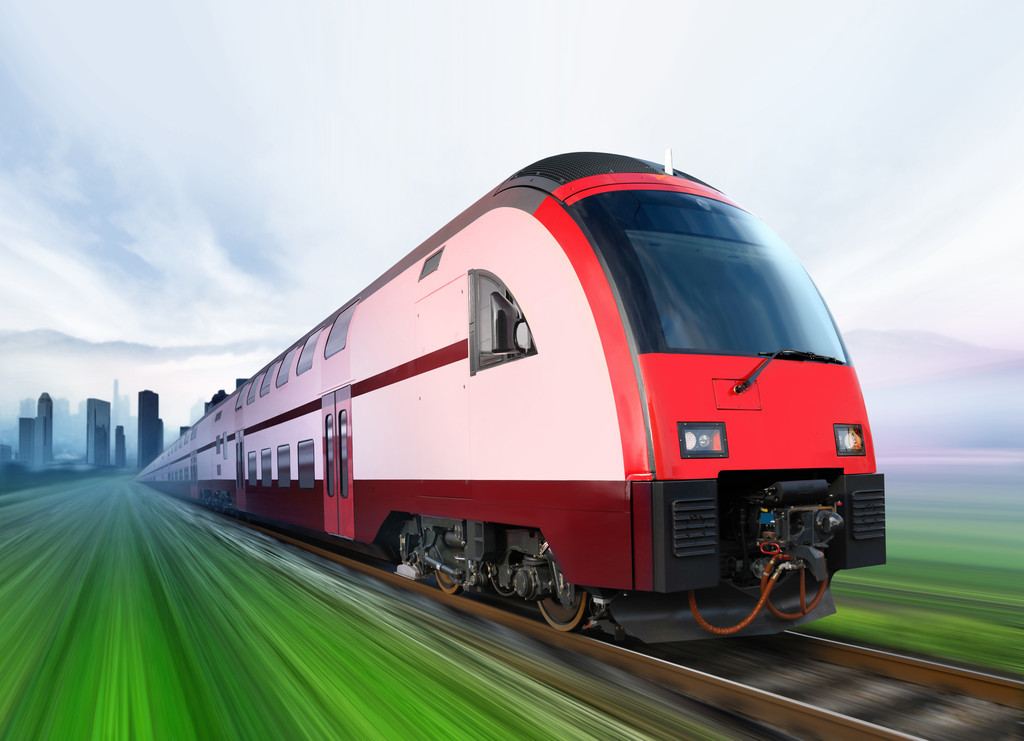A team led by the China Academy of Engineering is conducting a prefeasibility study on a high-speed maglev line in the Guangdong-Hong Kong-Macao Greater Bay Area, a senior rail expert said on Friday.

(Photo: IC)
What the team has agreed on so far is that the Guangzhou-Shenzhen-Hong Kong maglev line will be underground, using maglev trains with a designed maximum speed of 600 kilometers per hour, said He Huawu, vice-president of the China Academy of Engineering, while delivering a keynote speech during the opening ceremony at the 2019 World Transport Convention in Beijing.
Experts have proposed preliminary plans for the alignment of the maglev line. A map on current progress displayed during his speech has outlined four alternatives, which will pass Guangzhou Railway Station or Zhujiang New Town in Guangzhou, or Qianhai district or Futian district in Shenzhen.
"The team will take into account all kinds of high-speed maglev models, such as high- and low-temperature superconducting maglevs, as well as the air-free tube and other key problems to decide the technical and economic feasibility," he said.
In February, the central government issued the Outline Development Plan for the Guangdong-Hong Kong-Macao Greater Bay Area, calling for a rapid intercity transport network that includes high-speed railways and intercity rail links to reduce travel time among major cities within the area to one hour or less.
Explaining why the team is considering using maglev technology to improve the Greater Bay Area's transport, He noted that maglev is the future of ultrafast trains.
China now operates commercial bullet trains that run at a top speed of about 350 km/h between Beijing and Shanghai. The high-speed train, under actual operation conditions during the research phase, was able to reach 420 km/h in 2016. However, limited by factors including noise and vibration, so far it is greatly difficult to push the speed of a wheeled train much higher, he said.
The high-speed maglev train can fill the service gap between the current high-speed rail and aviation services, and it is of great technological and economic significance to improving the country's high-speed passenger transport network, he added.
China has been making consistent efforts in developing maglev technologies. In 2006, the Shanghai Maglev Train using German technology was put into use on a 30-km stretch between downtown Shanghai and the city's Pudong airport, with the maximum normal operation speed of 430 km per hour.
In May, a Chinese manufacturer CRRC Qingdao Sifang Co unveiled a prototype maglev train with a designed top speed of 600 km/h, which is regarded a major breakthrough and expected to lay a technological basis for an engineering prototype, according to previous media reports. The engineering prototype was reported to likely roll off the production line next year and in 2021 to undergo comprehensive testing and be made ready for commercial manufacturing.
He also noted that the country is also working toward a more intelligent high-speed railway system in terms of transport management, maintenance, comfort and technical upgrades.
"China has become one of the high-speed railway giants in the world, with its railway technology, equipment, construction and operation expertise recognized as advanced or even world-leading in some fields," He said, adding that China will focus on intelligent high-speed railway development in the next step.
By the end of 2018, China had a high-speed railway network covering more than 29,000 kilometers, accounting for more than two-thirds of the total high-speed railway in the world. By 2020, the country's high-speed railways are expected to extend to 30,000 km, covering 80 percent of major cities, according to the China Railway Corporation.


